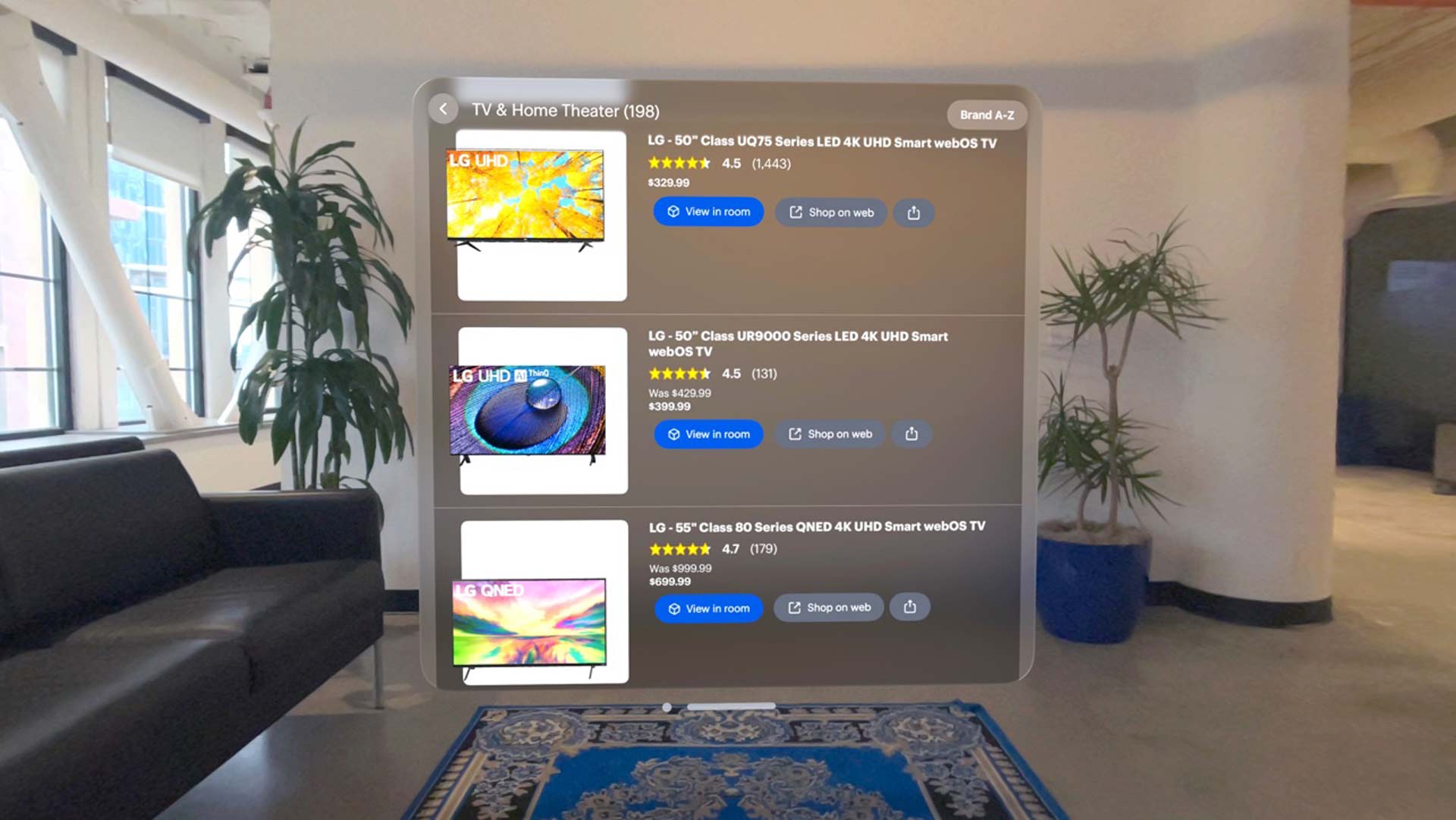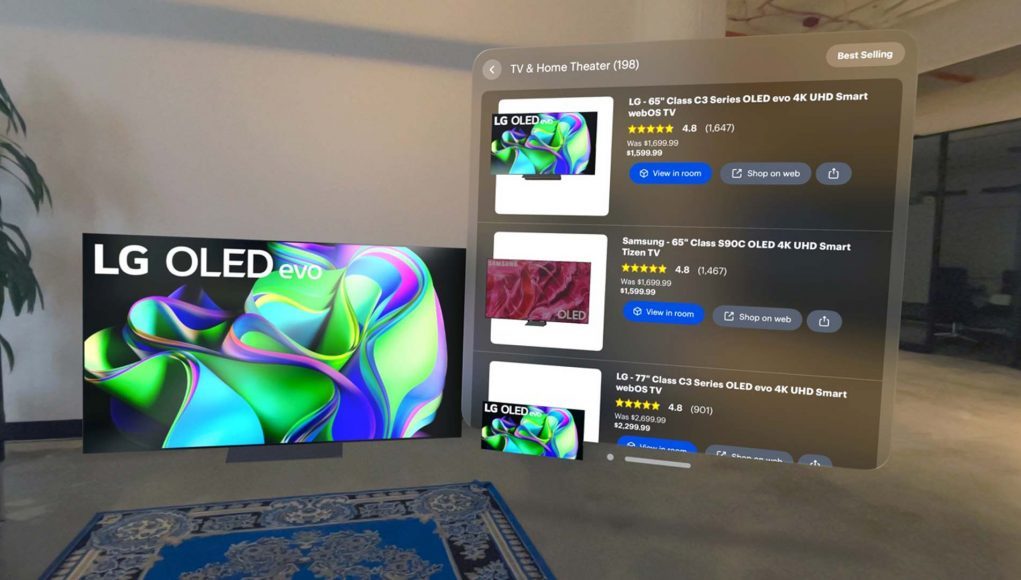Looking to see how that new 77-inch TV will fit in your rumpus room? Best Buy’s new Vision Pro app has you covered.
Released in April, the new Best Buy Envision app for Vision Pro offers up 3D preview models from a number of product categories, including TV & home theater, large kitchen appliances like fridges and freezers, computers & tablets, health & fitness stuff, and even furniture.
For now, you can’t actually buy stuff directly on the app; instead you’re given a hyperlink to the web-based store that you can then navigate and purchase on the full online store via Safari.

Even if you’re not looking to plonk down cash for a new toy or appliance right now, it’s a pretty cool way to preview a selection of accurately scaled stuff in-headset, albeit whittled down to a few manufacturers, such as LG, Bosch, Asus, Lenovo, Dell—and of course a ton of products from the company’s vertically integrated house brand, Insignia.
Granted, it’s not as extensive a selection as you can find on the company’s Best Buy mobile app, which features a lot more AR product previews using your smartphone’s camera, but it’s a pretty prescient look at what it could be like in the pretty near future.
And besides giving you a more accurate way of placing digital products in your room, it’s also pretty interesting to see the retailer invest in creating a Vision Pro-native app where others deemed it too niche—we’re looking at you YouTube, Netflix, and Spotify.
While we’re still waiting on that XR-driven shopping revolution companies have been touting for years now, take at a look at Best Buy Envision is action to see just how close we’re getting, courtesy YouTuber ‘Kel.Vision’:







